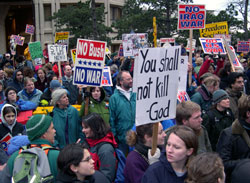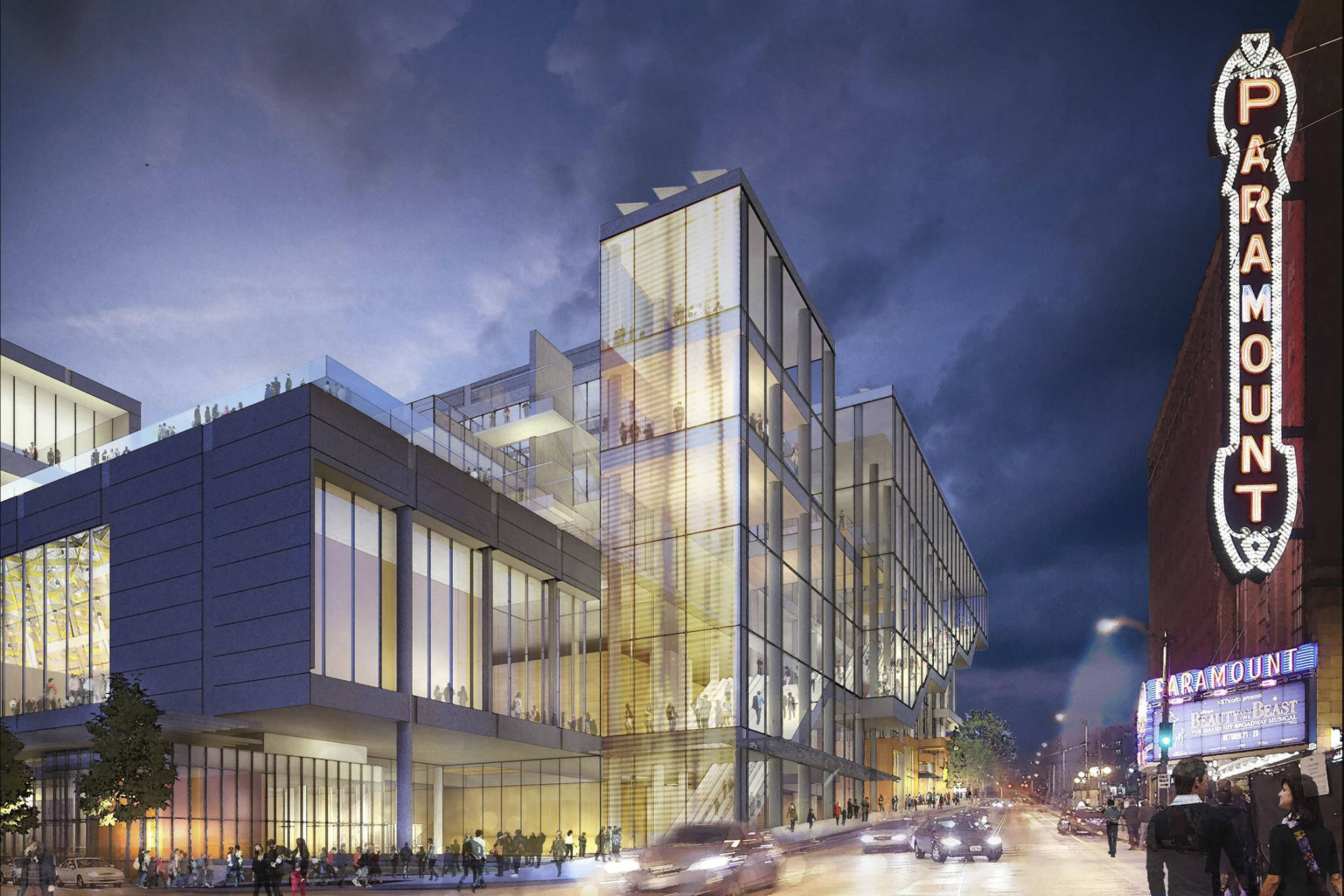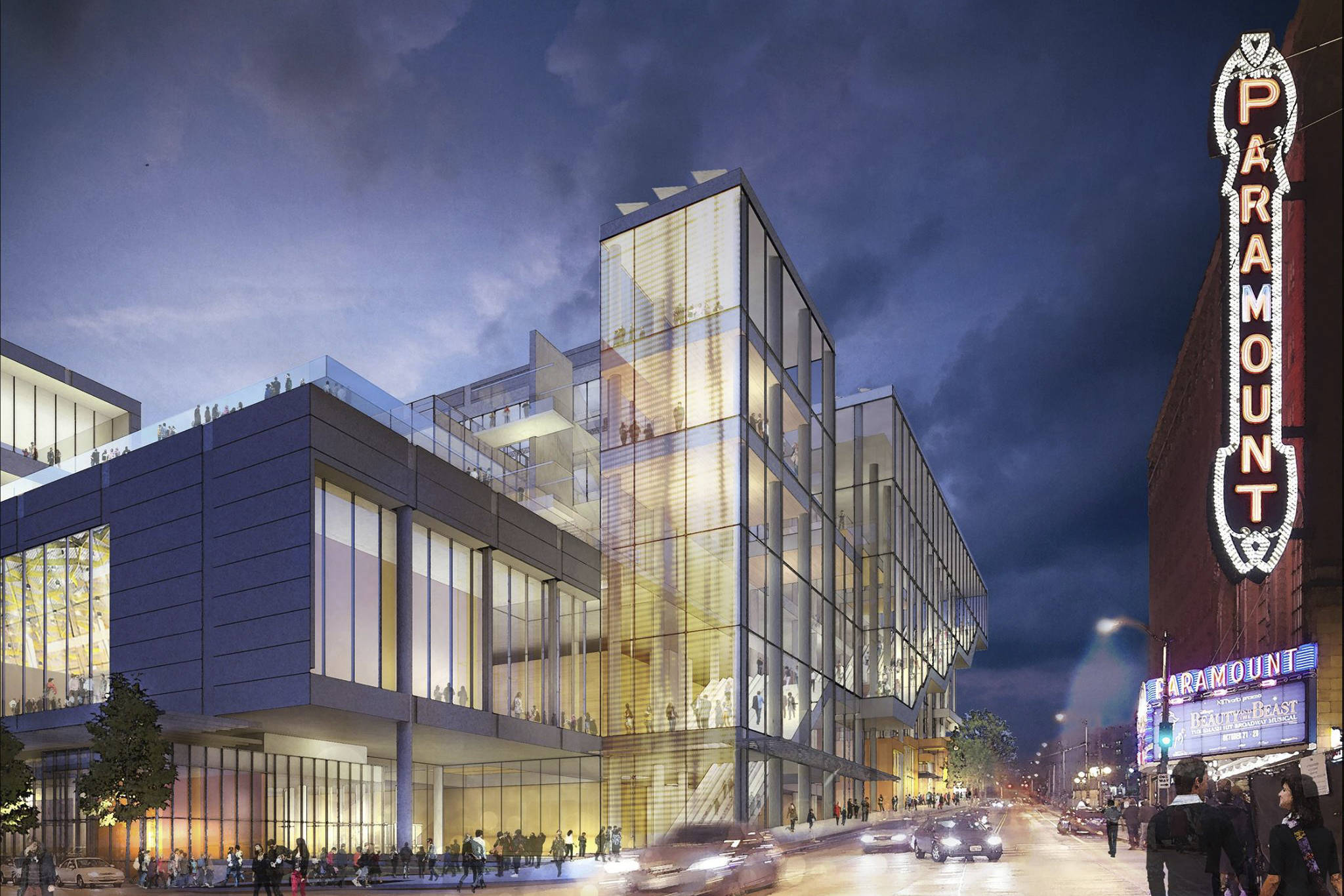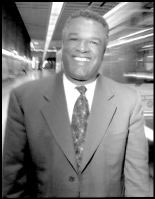As the U.S. displays overwhelming military might in Iraq, the Seattle peace movement begins a fight for its life. Locally, the numbers at street protests have fallen from tens of thousands in February to a few thousand last Thursday to hundreds over the weekend.
The pattern is similar to the movements trajectory after the first Gulf War in 1991. In the 90s, the movement died out except for a few stalwartsand it wasnt for lack of a good cause. Locally, Bert Sacks and his allies in Voices in the Wilderness struggled to raise awareness of the devastating effects that economic sanctions and the destruction of basic infrastructure had on Iraqi civilians, particularly children. By 1998, over 200,000 children had died as a result of the sanctions, according to Denis Halliday, a former United Nations assistant secretary general who coordinated the international communitys flow of food and medicine into Iraq.
During the run-up to Gulf War II, the peace movement was markedly different than in 1991: There were new tactics, from the neighborhood-based organizing of Sound Nonviolent Opponents of War (SNOW) to the extensive use of the Internet for organizing, educating, and communicating. The opposition has been more widespread and more mainstream.
Veteran peace campaigner Fred Miller puts a lot of faith in the neighborhood approach. We are not an army, were a peace movement, he says. Let the army fight the battleswe are about building communities. He describes his own neighborhood group, the Phinney Neighbors for Peace, as a fun, wonderful group of people who are helping each other and building that pressure for change in our nations foreign policy. He is excited at the fact that there are neighborhood groups not just in Wallingford and on Queen Anne but in Woodinville, Kirkland, and on Mercer Island. What will happen when we have 60 neighborhood peace groups in 60 legislative districts? What kind of difference will that make in the next state Legislature?
Linda Ellsworth, a Bellevue resident active in Suburbanites for Peace, believes the movement can go forward in several ways at once. We do a combination of things, she says. Getting out on the street corner really makes a difference in the atmosphere. She says it helps people feel less isolated and demoralized. At the same time, she believes, it is important to lobby elected officials to press the Bush administration for the truth of what is happening in Iraq. Sympathetic politicians should show evidence of the ways that we have been misled. Misinformation is a
big problem. Ellsworth has seen this kind of leadership a bit from [U.S. Reps.] Jim McDermott [D-Seattle] and Jay Inslee [DBainbridge Island].
The day after hostilities began in Iraq, McDermott reaffirmed his opposition to the war on the floor of Congress and suggested a possible focus for the peace movement in the coming months: We now owe the Iraqi people the fulfillment of the promises our president has made to them.
Inslee echoes that concern: Are we going to walk away from Iraq? Or we will fulfill the obligations the administration has assumed to rebuild the country?
Inslee notes that while President Bushs pledges to rebuild Iraqi infrastructure, prevent famine and epidemics, and nurture democracy are lofty indeed, this president came into office scorning nation building.
Inslee acknowledges that the peace movement has not yet picked up the keep-your-promises approach. He believes, however, that the movement will embrace the theme and it will take enormous pressure from the grassroots to hold Bush accountable.
Another of McDermotts concernsabout the use of depleted uranium munitionsis already widely shared among local activists. Depleted uranium is a by-product of the production of nuclear weapons and energy. It is less radioactive than naturally occurring uranium and is valued by weapons makers because it is extremely heavy and, when placed in artillery shells, has tremendous armor-piercing abilities. The Pentagon acknowledges using 320 tons of depleted uranium during the first Gulf War. Veterans groups and the Iraqi government have claimed radioactive dust from the fired munitions have contributed to birth defects, cancer, and other diseases.
McDermott hopes to pass a bill that would mandate a thorough, scientific study of the effects of using depleted uranium in munitions.
Activist Miller is excited at the prospect. We can get the folks on the overpass at Fort Lewis and the folks on the [I-5] overpass on 45th Street to work together on that.
Neighborhood SNOW groups have already been mobilizing around the issue. (McDermott will talk about depleted uranium as part of a panel on The Impacts of War at 7 p.m. Saturday, April 5 at University Temple United Methodist Church, 1415 N.E. 43rd St. Free.)
The specificity of the subject, however, is both its strength and weakness: It gives people something concrete and obtainable to work for, but it is unlikely to lead to widespread mobilization.
That dilemma writ large is the very one the peace movement must continue to struggle with: Having failed to prevent this particular war, it will be difficult to find an issue that is sufficiently broad to unite thousands of people across the country yet specific enough to give a realistic chance of a much-needed, short-term success.








